Netflix Could Open a New Chapter for Streaming

In California, where we live, people bid on the average of seven homes before they finally get one they want/can afford.
When we visit Puerto Vallarta and see something we kinda like at the mercados, we’ll visit at least four stalls before mutually agreeing on a price we’re willing to pay … one we feel is good for us, good for them.
And that, my friends, is how most people choose their entertainment services.
O.K., there’s a segment of the viewing public that can only enjoy something if it is free (pirated) but there’s a pretty easy way to stop/slow the thieves. MESA (Media & Entertainment Services Alliance) has a whole group of folks who have developed solutions to protect content from beginning to end – https://tinyurl.com/4zp3rap2 – “because we want you to make it difficult for the ‘totally free’ folks.”
If those users dislike streamers capturing/using their info, what do they think the Torrent sites do? … jeezz!
As for the industry, we’ve never figured out why services brag about how many times a movie/ series is pirated. It’s not only money out of their pockets but it also means the rest of us foot their bill!
Piracy costs streamers an estimated $30B plus every year and password sharing (freeloading) costs about $6B.
It’s not free advertising!
Every streaming service is saying enough is enough.
Despite Netflix’s miserable numbers for the 1st quarter, the bottom didn’t fall out of SVOD…far from it.
But SVOD has reached a point where it has to evolve.
No one really knows what the next phase will look like, but everyone has an opinion.
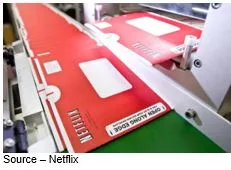
In August 1997, Netflix sent out its first red envelope (which started out white) and at their peak were sending out 12M DVDs a week.
In 2007, the company turned on the streaming spigot. Demand for new, unique content grew to 221M plus.
There are still 2M plus folks out there who want the envelope.
When they were “the only game in town,” studios fell all over themselves to have them distribute their film/series titles … until executives figured out they could do that too and make even more money.
In a little less three years, nearly all of the studios have reshaped their theatrical priorities and networks, moving from the day/time TV bundle to their own any time, any place, any screen service.
They all want to be the place where a subscriber will go so they can charge a fee based on “the value” of their content (translation … as much as they can get).
After all, $20/mo. is a lot less than the old $200/mo. subscribers used to pay for that overweight cable bundle.
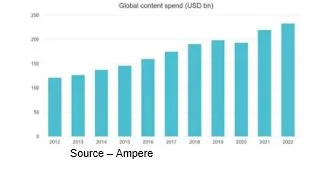
There are more than 300 SVOD/OTT services around the globe and that is expected to grow to 600 by 2025. All are focused on capturing their share of the 2B subscriber market by spending billions on “new, unique” content because … content is king.
Streaming investments led by Comcast, Disney and Netflix saw the global spend on content reach $220 billion in 2021 with the pot set to exceed $230 billion in 2022, according to a new report from Ampere Analysis.
In the US, 80 percent of TV households or 122.4M, have at least one SVOD service while the average number of services per household is four, according to Ampere Analysis.
In addition, the average churn rate is 35 percent.
Tough but tolerable.
Consumers will spend about $82.5B this year for subscription video content or $69.49 ARPU (average revenue per user).
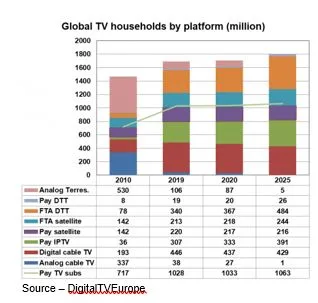
But around the globe there are home/personal video entertainment options available that people can spend money on for ad-free services as well as less expensive and ad-supported services.
To entice folks to its service, Netflix set the bar high by signing multiyear contracts with leading content producers/developers and then funding/controlling the resulting projects.
That worked great by serving up popular shows like Ozark, Orange is the new Black, House of Cards, Stranger Things, The Crown and more. They’ve even shown the industry that regional shows have global audience appeal.
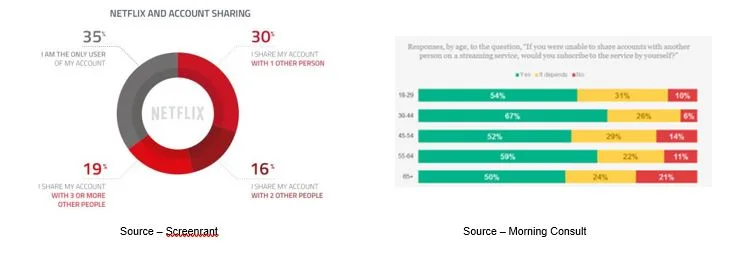
Netflix took a page from Hollywood and bragged about how many Torrent downloads – free word of mouth advertising – projects it had.
They really wanted to recover some or all of that revenue but …
While Netflix has tiptoed around the password sharing issue for a long time, most recently by offering phased pricing for friends and family viewing.
The test program was a resounding failure coming at the same time the company increased monthly fees which after years of overlooking password sharing didn’t go over well … to say the least.
Went over like a lead balloon.
Long time content producers/servers like HBO Max, Disney, Hulu, Amazon, Apple have had password protection capabilities and enforcement from the outset, so password sharing is minimal and aggressively discouraged.
Netflix, the globe’s leading SVOD by a wide margin, invested heavily in local content development which has helped them grow nicely in 190 countries in regions like the EMEA (Europe, Middle East, Africa), SEA (Southeast Asia) and LatAm.
But the service has always been a lot like Henry Ford’s Model T observation, “You can have it in any color you want, as long as it is black,” or in their case, all the content at one set fee.
Have they been considering growth options?
Sure!
The most tangible action has been its video game acquisitions (Next Games, Night School, Boss Fight) to tap into the lucrative, constantly connected Gen Z (10-24 years) $6B download and streaming gaming market.
It has worked … the games have attracted the younger crowd to its platform and its shows.
But offering tiered pricing options is something Hastings has resisted for years.

Snobs have been drinking the Kool-Aid … people cut their cord to escape advertising.
BS! Study after study has proven that’s not the case.

We’re not a reverse snob but we like ads … good ads.
We don’t like 20 minutes of ads an hour.
We don’t like the same stupid ads again … and again … and again …
That’s probably why advertising exploration/explanation was such a hot topic at NAB (which we covered earlier); and Hastings is right … there’s a lot of work to be done! And people want choices.

But Hastings and Netflix now have the opportunity to take the lead again not only with the content creation industry and the consumer but, more importantly, in helping the ad folks clean up the crap and do things right.
Netflix has the richest (most valuable) database of global viewer information (followed closely by Amazon and Apple) which can be used by the company to educate, assist marketers in developing more effective ads, understanding the best balance of ads and how to create ads people interact with as much as they do with the firm’s entertainment content.
Much as advertisers would love to have access to that data, it shouldn’t be shared.
The company needs to use the information to help advertisers give viewers a better experience when they view and interact with the ads.
Of course, it starts by Hastings making good on one the company’s founding precepts – giving consumers choice.
Sure, it will undoubtedly be expensive in the short term as an unknown number of subscribers shift to the lower-cost options.
That will only give Wall Street yoyos who only a short time ago were pushing folks to buy their stock to say, “See, we told you they couldn’t do it.”
However, many will stick with their ad-free status, others will “adjust.”
More importantly, it will increase the number of people/households using the service and mitigate churn.
Hastings has already signaled that the company will examine its options over the next year or two and make decisions that are right for the content creation industry, global consumers and last, but not least, investors.
Turning the industry leader won’t be easy or free of pain but in putting a positive spin on the change of heart Netflix COO Greg Peters said adding ad tiers, “is an exciting opportunity for us.”
The ceiling for Netflix isn’t 222M subscribers.
The ceiling is really 1B plus folks around the globe who want their entertainment when they want it, where they want it and, on the screen they have in front of them.
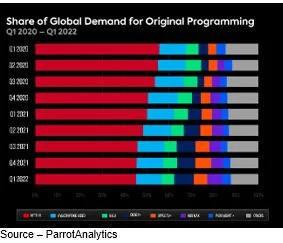
Tiered service options that include efficient, effective, intelligent ads will give folks the opportunity to watch what has clearly been the most sought-after content in a way that is budget friendly and treats them as intelligent individuals instead of targets.
Netflix has the data, infrastructure, experience and understanding of UI as well as recommendation and integration capabilities.
They offered something totally unique that people came to want/expect back in 2007; and now, they have a chance to do it again.
They enriched the content creation/distribution market before and now they have a chance to repeat it in the years ahead.
There was certainly plenty of interest at NAB on how content providers and marketers could improve the quality and effectiveness of advertising.
Netflix might have the opportunity to take it to the next level.
The goal for everyone is to understand and interest folks, keeping in mind what the Girl in Anon said, “It’s not that I have something to hide. I have nothing I want you to see.”
Imagine getting ads in your content that you stick around to watch instead of running to the kitchen or bathroom.
It could happen, but it’s going to take time.
It’s not an end to original content creation, but it could improve ads.
Think about it … sitting there watching original content advertisements.
# # #
Andy Marken – [email protected] – is an author of more than 700 articles on management, marketing, communications, industry trends in media & entertainment, consumer electronics, software and applications. Internationally recognized marketing/communications consultant with a broad range of technical and industry expertise especially in storage, storage management and film/video production fields. Extended range of relationships with business, industry trade press, online media and industry analysts/consultants.